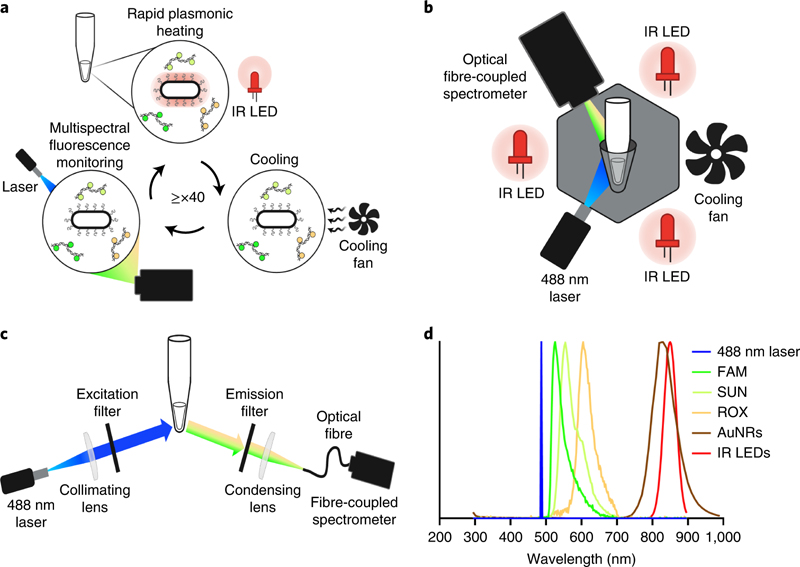| a, Schematic of multiplexed real-time plasmonic RT-PCR, with heating driven by IR LEDs acting on AuNRs and cooling aided by a 12 V fan. The AuNRs are suspended in solution in a 0.2 ml PCR tube, rapidly absorbing light from the LEDs and converting it to heat, allowing for fast PCR thermal cycling. A 488 nm laser and spectrometer setup provides real-time fluorescence detection and takes a measurement at the end of each annealing/extension hold. b, Schematic of the instrument. A PCR tube is surrounded by low-cost optical components, without Peltier heating elements. The main components of the instrument include a thin-walled PCR tube surrounded by three IR LED modules, a cooling fan, and a 488 nm laser and spectrophotometer setup for fluorescence detection. The three IR LED modules consist of 850 nm IR LEDs attached to heat sinks as well as heat-sink fans and placed concentrically surrounding the PCR tube. Temperature control can be achieved through closed-loop sensing with a wire thermocouple or through contactless open-loop control. c, Schematic of the fluorometer system. Light coming from a 488 nm laser passes through a collimating lens and filter before reaching the PCR tube. Light emitted from the tube passes through a condensing lens and a 500 nm edge emission filter (Semrock) before travelling through an optical fibre to reach the spectrometer. d, Graph depicting non-overlapping optical spectra of various components within the system, namely, 488 nm excitation peak, three emissions (520, 555 and 610 nm), IR LED excitation and AuNR absorbance. Credit: Columbia Engineering / Nature Nanotechnology. |
